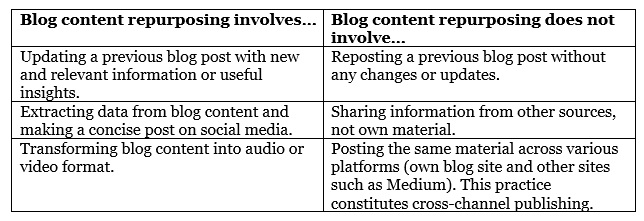“The lead generation process starts by finding out where your target market ‘lives’ on the web.” — Wayne Davis
Business professionals worldwide rally around the battle cry “Drive more sales!” Indeed, boosting sales is typically the top priority for most businesses. Sales, nevertheless, do not materialize from the ether. There is legwork that goes into spurring sales. The question on most professionals’ minds is, “How to boost sales?”
The real question should be: “How do we generate more leads?”
In this article, we will explore lead generation in depth. Moreover, this article will present seven ways to generate leads through content creation. Business professionals can ultimately expect to increase lead generation through effective content creation. So, please read on.
What is lead generation?
At its core, a sale depends on a lead. A lead is an individual interested in purchasing a product or service.
This initial interest may stem from mere curiosity. As the individual gets to know a product or service more closely, they begin to formulate a perception.
In turn, this perception leads to a decision: to purchase or not to purchase.
When an individual shows a clear interest in acquiring a product or service, they become a lead.
A lead is an interested party that may potentially follow through on a purchase.

When the purchase occurs, business professionals call this action a “conversion.”
Converting interested parties into leads is the first step in generating a sale. A lead that shows significant interest becomes a qualified lead.
Lastly, a qualified lead who purchases becomes a customer. Given this progression, businesses measure their success by their conversion rates.
In short, conversion rates pertain to the ratio of leads that become customers. But what is a good conversion rate? Is it 90%? 75%? 50%?
The average conversion rate is roughly 2.35% for most e-commerce sites. This figure is surprisingly low given the number of visitors that most websites get daily. Also, please note that the most successful brands have conversion rates hovering above 10%.
What do these figures mean?
These data reveal the importance of bolstering lead generation. Driving sales is ultimately a numbers game. The more leads a brand generates, the more sales it makes. Consider this situation:
A brand has a healthy conversion rate of 6%. Based on this figure, 6 of every 100 leads makes a purchase. If the brand spurs its lead generation to 1,000, it will generate 60 sales.
Indeed, generating leads is the cornerstone of selling more. So, brands and business executives must strive to find new and innovative ways of generating leads. Here are seven ways businesses can improve lead generation through content creation.
7 Ways To Boost Lead Generation Through Content Creation
1. Social Media Presence
Social media is “the” place to be. With approximately 58.4% of the world’s population on social media, brands cannot afford to forego a presence on social media platforms. In raw numbers, brands can access about 4.6 billion users worldwide.
However, building a presence on social media is not about “If you build it, they will come.” Building an effective following on social media boils down to meaningful content creation. If the content is relevant and engaging, the following grows.
What type of content works well for social media?
In general, video content is the most popular content type. For instance, HubSpot reports that YouTube is the world’s second-largest search engine. This fact underscores visual content’s predominance.
Nevertheless, there are other ways in which content makes its way into social media. According to HubSpot’s report, 82% of marketing professionals surveyed indicate they repurpose content for social media.
This figure is truly revealing.
Taking content from various sources and transforming it into a social media-friendly format has become increasingly effective. As a result, taking useful information from books, magazines, articles, and blogs can lead to helpful tidbits on Twitter posts, YouTube shorts, or TikTok stories.
Most important, the main purpose is to be as creative as possible.
2. Updated Content
A common misconception is that content marketing always produces brand-new content. However, that is not necessarily the case.

An effective content creation strategy is to update existing content.
Updating content includes blogs, e-books, articles, and video content.
After all, consumers consistently look for the latest information available to them.
Here is a list of ideas to update existing content:
- Worksheets
- Webinars
- Podcasts
- Mini e-books
- Printable posters
- Tutorials
- Swipe files
- Cheat sheets
- Slide presentations
- Transcripts
These content creation tactics allow current content to be updated and repurposed, especially for social media. As a result, brands can continue being relevant without needing to reinvent the wheel.
3. Blogging
Blogs are a tried-and-true form of content creation. However, it is easy to overlook blogs’ relevance and importance, particularly when compared to social media’s increasing influence on society.
So, are blogs still relevant? Consider these figures:
- Long-form blog content produces an average of 77.2% more links than short-form content.
- According to the Content Marking Institute, 60% of marketing professionals surveyed report that blogging boosts lead generation.
- 74% of companies surveyed reported that content creation had increased the number and quality of lead generation.
Indeed, blogging is a content creation and lead generation tactic that business professionals cannot overlook. Here are three key tips for successful blogs:
- 1. Review popular blogs and podcasts in a specific market niche.
- 2. Generate a list of ideas based on popular blogs and podcasts.
- 3. Create an outline for a new blog or update an existing one.
This exercise aims to give brands a fresh perspective on what currently works. The idea is not to mimic popular blogs. Instead, this exercise intends to help blogs find their own identity based on their target audience’s specific characteristics.
4. Webinars or Video Presentations
It is evident that video content is a highly popular form of content. So, does that mean that every brand must go out and create videos en masse? Not necessarily. Fortunately, harnessing the power of video content is much simpler than one might assume.
Savvy marketing professionals use webinars to boost brand awareness while delivering valuable content. The secret to webinars lies in giving customers actionable advice to address their pain points directly. This advice serves to build a subscriber list which can then yield leads.
Producing webinars is relatively simple, thanks to platforms such as Zoom. Zoom enables virtually anyone to reach a significant audience base. But here is the secret: Be careful not to pitch anything openly. Please take the time to address pain points and how they can be solved. Presenting a brand as part of the solution allows brand awareness without shamelessly plugging a product or service.
5. Quizzes and Surveys
Why not try something fun?
Most people love participating in quizzes and surveys. However, most folks must believe they’ll get something out of it.
For instance, offering free discount codes, coupons, gifts, or exclusive deals is a great way to entice consumers. In exchange, consumers answer a few questions and give you their email addresses.
This strategy is a great way to build a subscriber base without openly pushing products on consumers.

Quizzes and surveys should also yield some valuable information. For instance, the quiz or survey results may unlock an e-book that provides useful and actionable advice. Also, consumers may get exclusive access to a video presentation that delivers insights into solving their pain points.
Please bear in mind that quizzes can also help brands understand more about their customers. Consequently, brands can continuously tailor their content to suit their customers’ needs and wants.
6. Search Engine Optimization
Search engine optimization (SEO) is a must regardless of the content type. In essence, SEO utilizes keywords to place content atop search rankings. For example, when a person searches for a “beach umbrella,” websites, blog posts, or social media content using these keywords appear in the results. The goal is to place one’s content atop search results.
This lead generation strategy works wonders when content is original, meaningful, and relevant. Here are five great tips to boost SEO rankings in content:
- 1. Use long-tail keywords such as “the best beach umbrellas in New York.”
- 2. Ensure meta descriptions include relevant keywords. Here is a quick example: “Learn more about the best beach umbrellas in New York.”
- 3. Avoid keyword stuffing. In other words, use keywords naturally and logically so they flow within the text.
- 4. Search relevant keywords on search engines such as Google. Look at the content atop search results to get a good sense of what content search engines value based on those keywords.
- 5. Ensure that titles and headers contain relevant keywords as often as possible.
Content creators easily overlook SEO. Nevertheless, SEO is a powerful tool that helps consumers notice content. Take the time to include relevant keywords carefully and as often as possible.
7. Frequent Website Updates
A critical part of SEO is updating websites. Search engines highly value websites that have frequent updates. Updating signals to search engines that sites are active. In contrast, neglecting to update websites shows search engines that users are not keen on keeping them current.
So, how can one update websites?
There are plenty of tactics one can use to update websites:
- Frequently revising product descriptions
- Adding or modifying blog content
- Adding, updating, or eliminating product pages
- Updating frequently asked questions
- Adding or reviewing links to other sources
- Consistently adding or reviewing social media links
- Including customers’ comments and reviews
Boosting SEO is about maintaining as much activity as possible on the site. A good rule of thumb is to update the site at least once weekly. These updates do not have to be substantial. Even slight updates are enough to signal search engines that a site undergoes continuous maintenance.
How can hiring a writing agency boost lead generation?
Content creation is a highly effective means of boosting lead generation. However, one might ask, who can produce consistent, high-quality content?

First, incumbent staff members may be able to handle the task.
Nevertheless, asking current employees to write top-notch content in addition to their daily tasks may be a tall order.
Also, assembling an in-house writing team comes with its limitations.
In-house writing teams may lack the skills and experience to tackle a wide range of topics and content types.
So, what can brands do to create lead-generating content?
Hiring a writing agency can become the most cost-effective and time-saving solution brands can utilize to boost lead generation.
Here are three main benefits of hiring a writing agency to boost lead generation.
- 1. A professional writing agency can handle any type of content. A trusted writing agency generally employs a diverse team of professionals. These professionals come with backgrounds in various areas. As a result, any content type, from marketing copy to video scripts, falls within their scope. This flexibility ensures that brands get the content they need in a single source.
- 2. A trusted writing agency can produce tailored content. Professional writers can personalize generic content to suit a brand’s particular needs. Consequently, content becomes relevant and insightful to consumers’ specific needs and wants. This approach allows brands to become relatable and remain relevant to their target audience.
- 3. A writing agency produces consistent content. Professional writing agencies are a team. Therefore, the workload does not fall on a single set of shoulders. Instead, writing agencies spread work throughout the team, ensuring timely content production. This approach ensures brands save time and effort while consumers get consistent, high-quality content that alleviates pain points.
A Final Thought
A common misconception regarding a professional writing agency is cost. Specifically, some believe that hiring a writing agency is expensive. However, the cost of not hiring a writing agency is even higher.
Think about the cost of lost leads and sales.
Think about how much it costs staff members to produce content in addition to their daily tasks.
Think about how much it costs to assemble an in-house writing team.
The bottom line is that the return on investment from hiring a writing agency far outweighs any other alternative. Furthermore, hiring a professional writing agency is far more cost-effective than one might think. Hiring a trusted writing agency is like employing any other business partner.
Ultimately, a professional writing agency becomes an investment instead of an overhead expense.

































